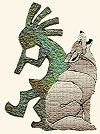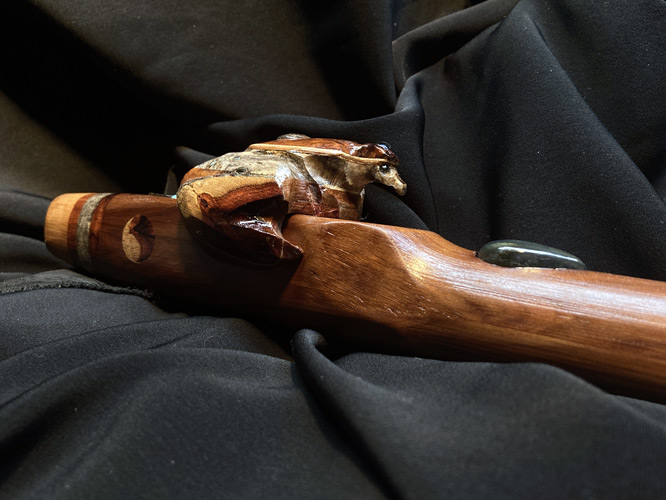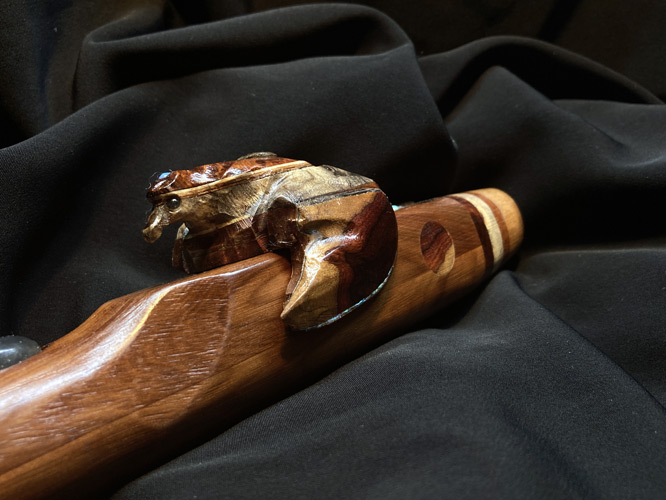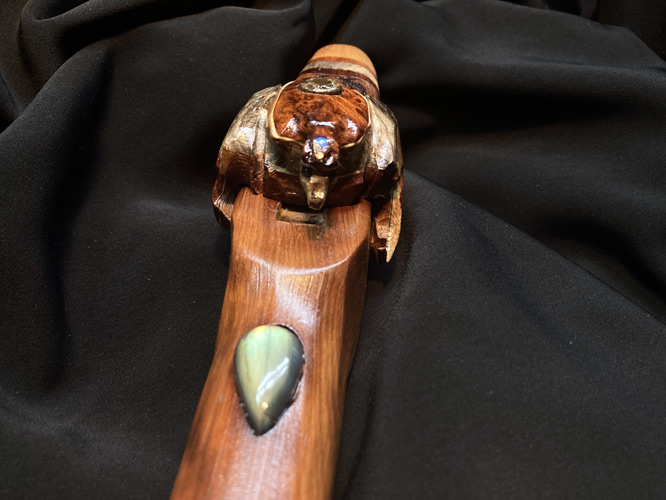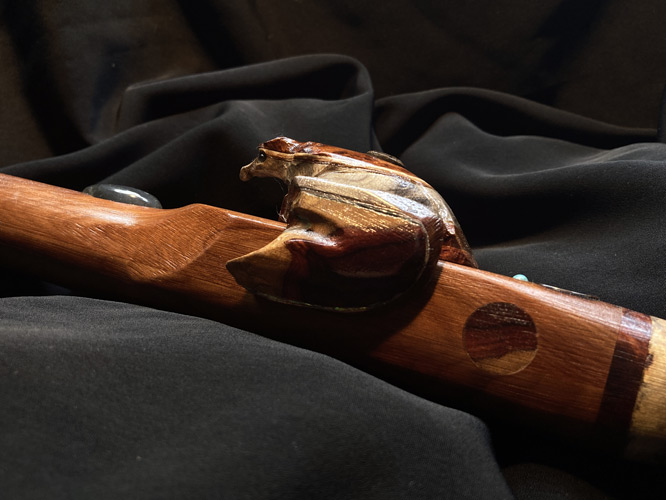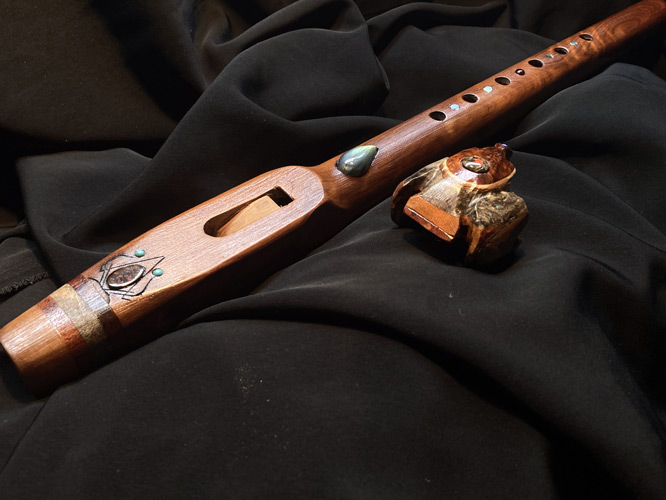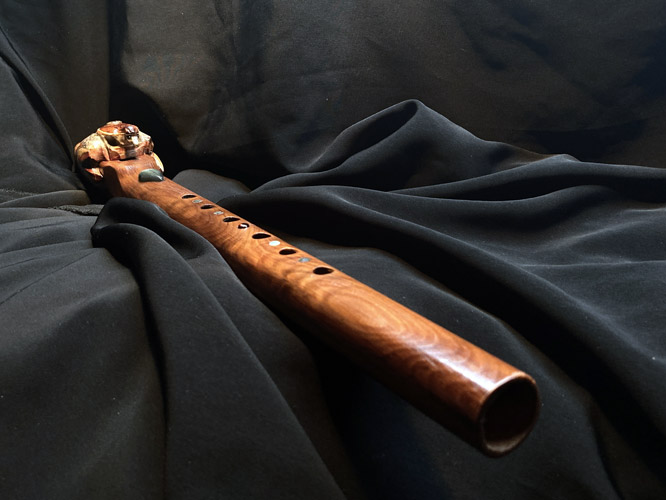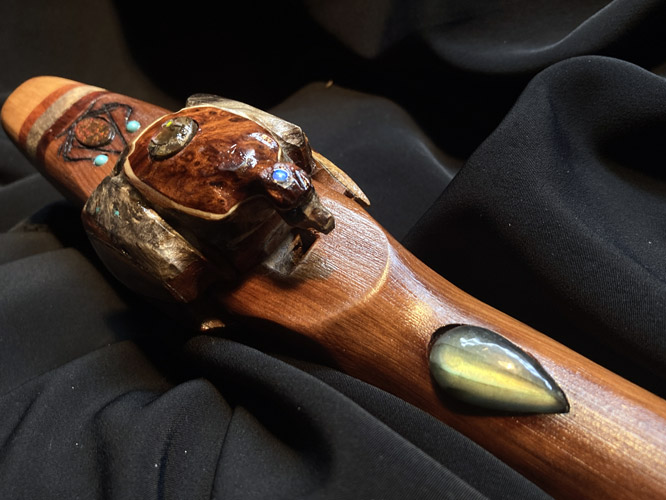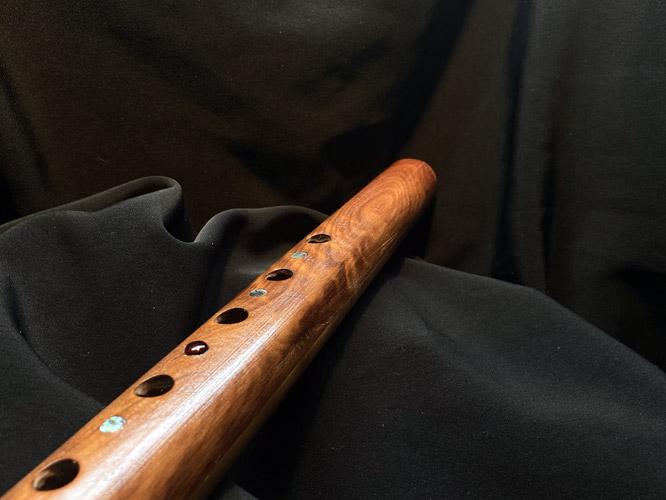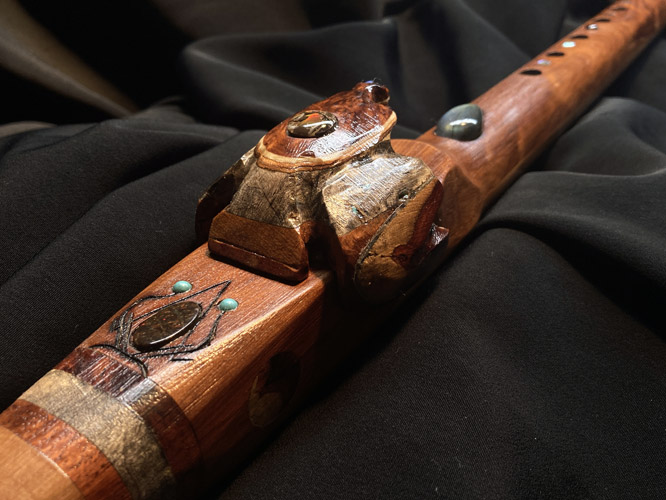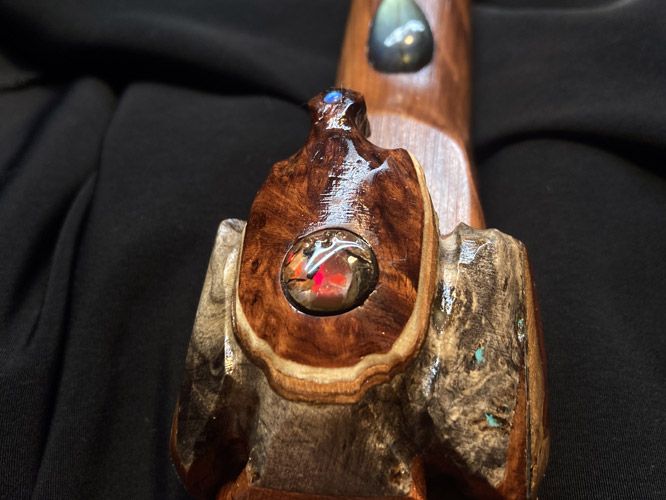$560.00
FREE DOMESTIC SHIPPING
Ancient Kauri Gm
1 in stock
This instrument is 19-15/16” in length, with a 7/8” bore diameter. The primary wood is a 50,000 year old New Zealand material known as Kauri. It still grows today, but this material was preserved in a bog wherein the cellular voids were amberized, preserving it and preventing deterioration. Additional woods, beginning at the mouthpiece, include CA buckeye burl, between layers of SE Asian amboyna burl, and capped with the kauri. Moving forward, the compression fit block or bird was cut from a solid base of kauri wherein a spacer of Oklahoma red cedar makes contact with the flute body, for moisture control. Overlay for the wings include sheet abalone and additional amboyna burl. The top of the bird is layered with buckeye burl, Virginia walnut burl, yew burl, mappa burl, capped with the amboyna burl.
Inlay begins at the mouthpiece, with a 9x15mm “Dragon Skin” ammolite cab, (very rare), flanked by 4mm turquoise dots. The ammolite is 70-110 million years old. Set into each side of the compression chamber, are16mm disks of amboyna burl, to complement the wing material of the bird. Further forward, the sound chamber is set with a 15x27mm dome cut teardrop labradorite cab. Finger hole accents include four 5mm abalone dots, and a 6mm dome cut almandine garnet cab…..Lastly, inlay to the fetish block includes an 11.5mm 70 million year old ammolite cab set to the back, originating in the Alberta CN Bear Paw formation, while the bird’s crown is accented with a tiny 2.8mm Australian fire opal. The eyes of the bird are likewise set with 2.8mm hematite beads.
Mounting the totem to the flute, is delicate, but could be fun. I can never predict in advance the approach angle most appropriate, until both the flute and block are completed. In this case, pretend the flute is an aircraft carrier and you are flying the bird and want to land. Approach the flue area from the rear, or mouthpiece area. Gently touch down and slide it forward to just behind the true sound hole, making sure it is flush to the flute’s surface. To remove the block, REVERSE the order, and BACK the block off back toward the mouthpiece.
It takes me longer to build these blocks than it does the flute, so should a wing snap off, you no longer have a flute, The block was cut from one piece, so it is substantial, and following directions, should last forever. Additionally, with a water bird in mind, they always looked more like a turtle. By reversing the wing direction, I think it now looks more like a flying anteater, which I’m hoping is a highly revered, mythical creature, but I doubt it,
Tuned at an ambient temperature of 71.9°F, a wood temp of 73.4°F, a relative humidity factor of 33%, all at sea level.
1 in stock
